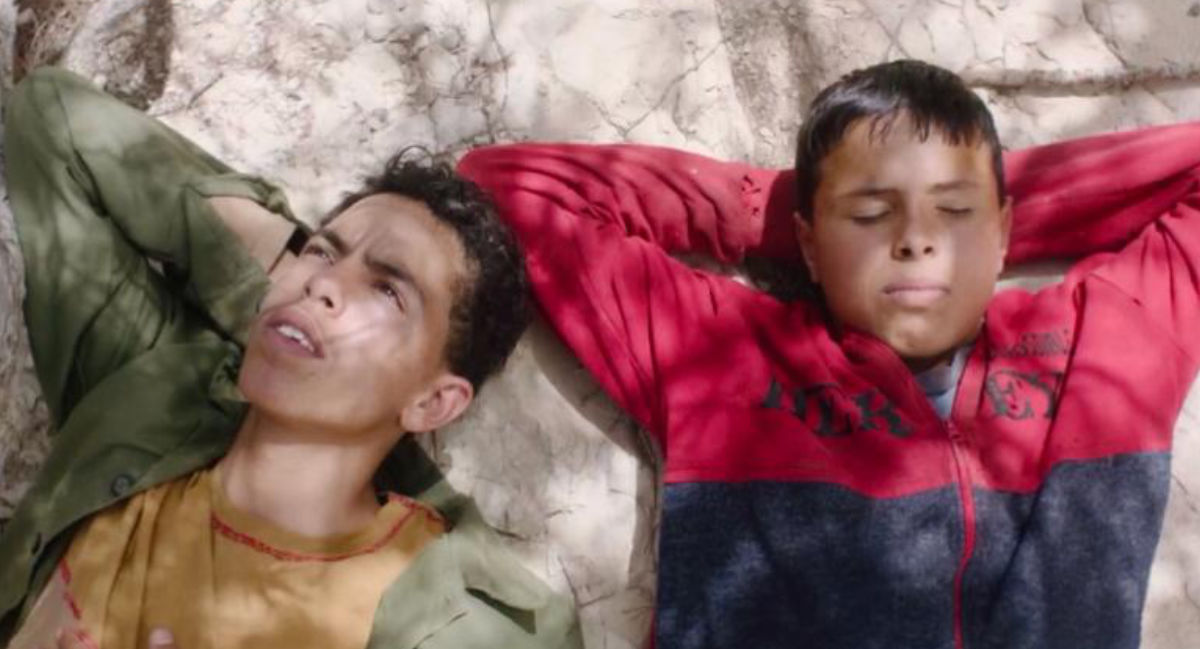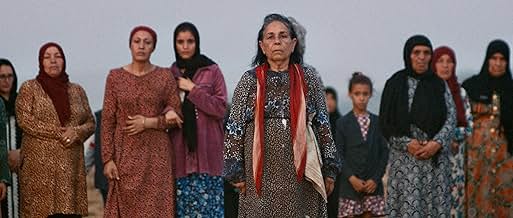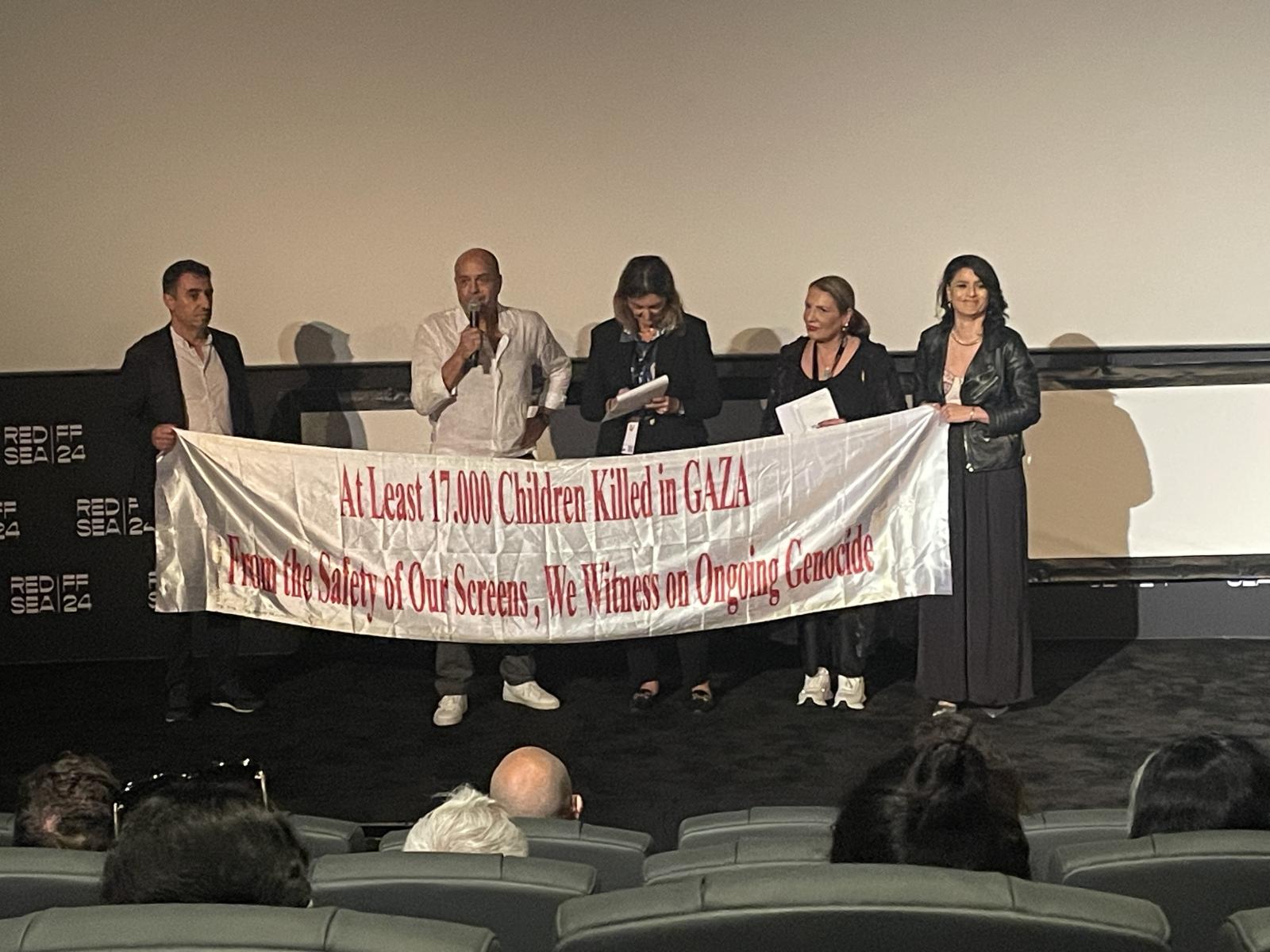A work inspired by a real drama
Before the screening, Lotfi Achour spoke to recall that his film was inspired by a tragic event in Tunisia in 2015. From the first scenes, where we discover two adolescents playing in a green mountain, the souvenirs are flocking and the dread settled. These images evoke with a visceral force the assassination of Mabrouk Soltani, a young shepherd beheaded by terrorists at Mount Mghila. This crime had horrified Tunisia, especially because of the macabre details that surrounded it: the young boy’s head, sent to a plastic bag to his family, was kept in a refrigerator for two days. The dissemination of these images by the media and their virality on social networks had amplified the national shock wave.
Red children It is not content to relate this drama: he reflects on the trauma, collective memory, and the political dysfunctions that have exacerbated this tragedy.
A poetic and misleading opening
The film opens on mountain landscapes of breathtaking beauty. Lotfi Achour’s camera captures the gross majesty of the premises, both bewitching and threatening. The first plans, bathed in natural light, pose a decor where nature is omnipresent. But this nature, as sublime as it is, conceals an implacable hardness: the mountains are dotted with mines, and their isolation makes it a ground conducive to horror.
In this environment, young shepherds Ashraf and Nizar appear as figures of innocence. Their carefree laughter, their races in the hills and their communion with nature establish a striking contrast with the invisible threat that hovers. The poetry of these initial scenes is tinged with a subtle tension, heralding imminent tilting in horror.
The brutality of the tragedy
The tilting is sudden. The carelessness of the two teenagers is violently interrupted by an attack. The attackers are not shown on the screen, but their presence is felt in all its violence. The camera focuses on the young Achraf, who will discover the horror of the head of Nizar, resident out of scope. This head is briefly shown, placed on the ground, in a moment of deliberate shock.
During the discussion that followed the projection, the director explained this artistic choice. Show or not show this head was a central debate during filming. Finally, Lotfi Achour decided that it was essential to show it once, so that this image is printed in the mind of the spectator. Once the head is placed in a plastic bag, it no longer appears directly on the screen, but remains present in each scene where the bag is visible. This subtle choice amplifies horror, making it both omnipresent and unbearable.
Ashraf’s initiatory journey
From this moment, the story focuses on Ashraf, cousin of Nizar, responsible for bringing his family’s head back to his family. This trip is both an act of survival and a confrontation with horror. Traumatized by what he has just experienced, Ashraf finds refuge in his imagination, a defense mechanism that the film explores with great sensitivity.
Lotfi Achour skillfully mixes realism and dreamlike. The scenes where Ashraf revisits his memories or recreates imaginary scenarios offer the spectator moments of visual escape, which contrast with the brutality of reality. These poetic escapes underline the importance of the imaginary in the process of resilience in the face of trauma.
Despite Ashraf’s efforts to escape reality, he must accomplish his mission: bringing his family’s head back to nizar. This course, strewn with pitfalls, pushes him to face the unspeakable. The sequences where he arrives at his home, confronted with the despair of his loved ones, are among the most poignant in the film. The mother of Nizar, broken by sorrow, claims the whole body of her son to offer him mortuary rites and a worthy burial.
A harsh criticism of institutional indifference
Red children Is not limited to telling a personal story: he sets himself up. The passivity of the authorities in the face of this heinous crime is a central theme. For two days, no intervention by the police took place. It was the family members who had to go to the mountains to recover the abandoned body of Nizar. It was only after the broadcast of the video by the terrorists and the interest of the media that the authorities deigned to react.
Lotfi Achour denounces this institutional indifference, while highlighting the abandonment of marginalized areas. The communities living in these regions are taken in the vice between the terrorist threat and the inaction of the state. This observation gives the film a universal scope, questioning the role of the state in the face of its most vulnerable citizens.
Overwhelming performance
The choice of a casting made up of non-professional is one of the strengths of the film. Ali Hleli (Ashraf), Yassine Samouni (Nizar) and Wided Dabebi (Rahma) embody their roles with disarming sincerity. Lotfi Achour revealed that these young actors had been selected after months of training and casting workshops. Ali Hleli, in particular, impressed by his instinctive understanding of the character of Ashraf.
The director insisted on the importance of choosing actors from the same environment as Mabrouk Soltani, in order to strengthen the authenticity of the film. Ali Hleli, a campaign teenager, has delivered a remarkable performance, doing justice to the emotional complexity of his role.
A demanding and immersive shooting
Initially, Lotfi Achour wanted to turn into the very village of the Soltani family. However, the absence of infrastructure in this region has rendered this project impossible. The shooting therefore took place in El Kef, whose mountainous landscapes recall those of Mount Mghila.
Despite these constraints, the production team, made up of 120 people, took up the challenge of recreating the authentic atmosphere of tragedy. The producers supported the director in his choices, allowing him to move away from Tunis to film in a more realistic environment.
A cry against forgetting
With Red childrenLotfi Achour signs a memorial and committed work. By highlighting authentic details – the head preserved in a refrigerator, the inaction of the authorities, or the role of social networks in the media cime – it recalls the importance of not looking away.
At the end of the projection, the team brandished a banner in support of the children of Gaza, stressing the parallels between the atrocities experienced by Mabrouk Soltani and those suffered by other innocent children around the world.
In a few days, Red children will be presented in official competition at the Carthage Cinematographic Days.
Neïla Driss











